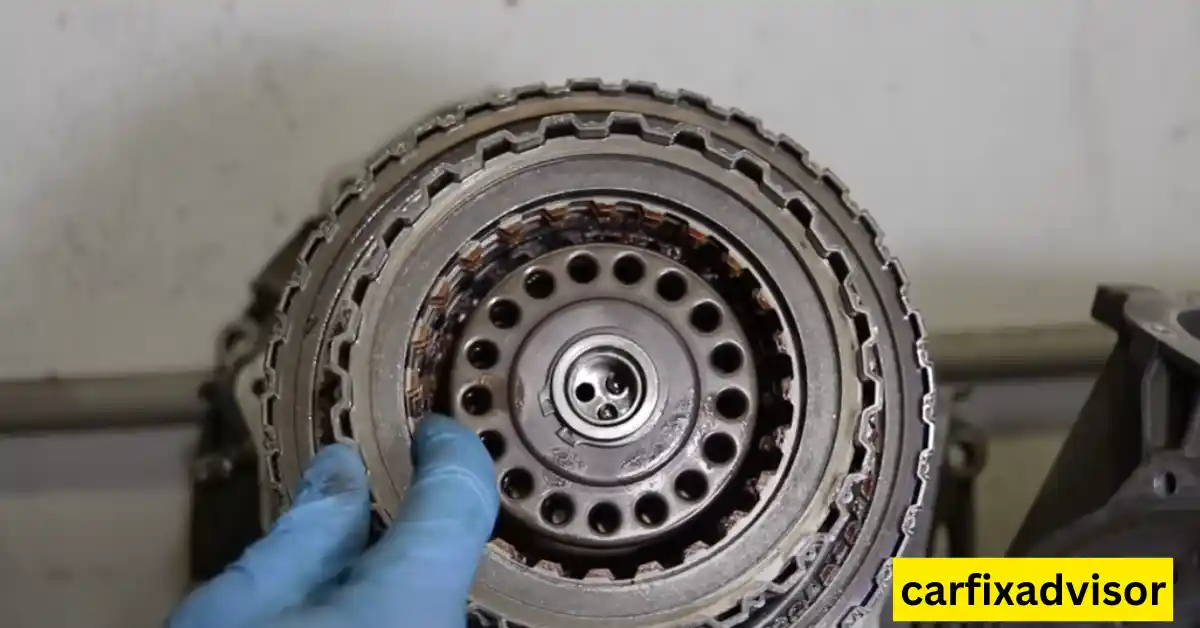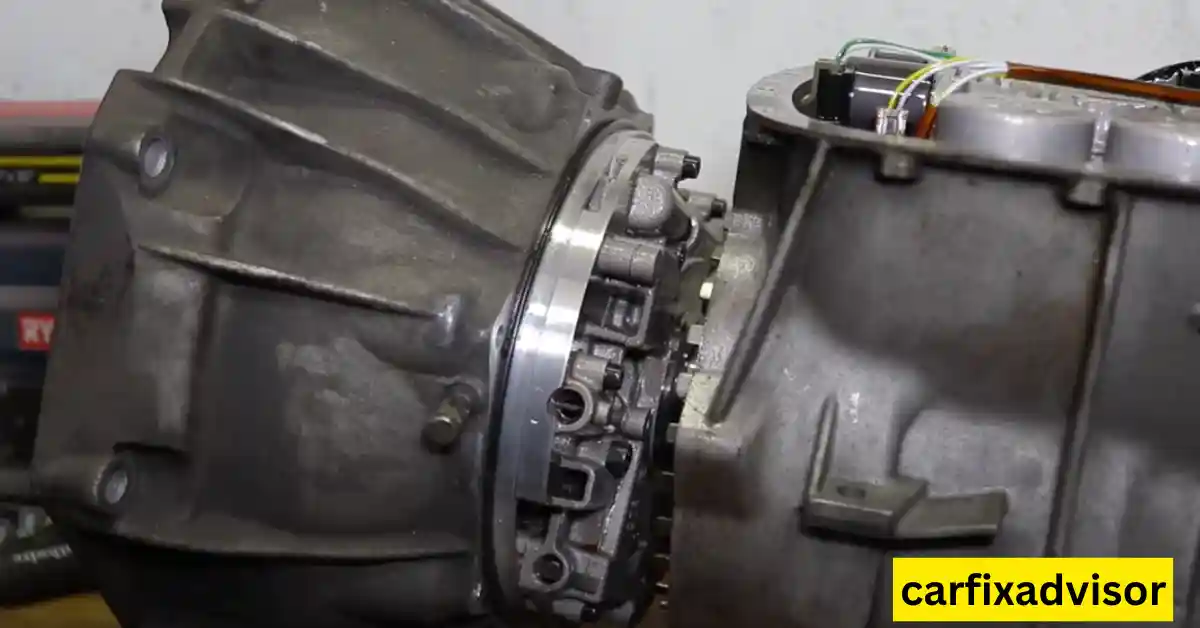When your automatic car stalls while reversing, it can be an unsettling experience. Unlike a manual transmission, where a stall typically happens when the driver fails to properly engage the clutch, automatic cars rely on a completely different mechanism to keep the engine running smoothly. However, like any mechanical system, things can go wrong. In this article, we will discuss the common reasons why automatic cars stall in reverse and provide comprehensive solutions to help you fix the issue.
Understanding the Basics of Automatic Cars and Stalling
To understand why your automatic car stalls in reverse, it’s essential to know a bit about how these vehicles operate. Automatic transmission cars are equipped with a torque converter, which replaces the need for a traditional clutch. This allows the engine to transmit power to the wheels without requiring the driver to manually shift gears.
However, automatic cars are not immune to stalling. While less common than in manual transmissions, it can still occur, especially under specific circumstances. When your car stalls in reverse, it generally points to an issue with one or more components in the car’s powertrain, fuel system, or electrical system.
Common Causes of Automatic Car Stalling in Reverse
There are many potential reasons why your automatic car might stall when you try to reverse. Let’s take a look at the most common causes, and how to address them.
1. Incorrect Gear Engagement
A common reason automatic cars stall when reversing is incorrect gear engagement. If the car is in reverse gear and the engine is struggling to match the car’s movement, stalling can occur. This often happens on steep hills or when the vehicle is trying to move against an incline.
Solution:
If your car stalls due to incorrect gear engagement, ensure the vehicle is properly placed in gear before attempting to reverse. On steep inclines, engage the handbrake, restart the car, and carefully release the handbrake before shifting into reverse.
2. Transmission Fluid Issues
Transmission fluid plays a critical role in maintaining the proper function of an automatic transmission. If the fluid is low, old, or contaminated, the car’s transmission may not be able to shift correctly, leading to stalling.
Solution:
Check the transmission fluid level and ensure it’s clean and at the proper level. If the fluid is low or dirty, replace it or top it up. A clogged transmission cooler line can also cause fluid flow issues, so inspect the cooler circuit and replace any blocked components.
3. Fuel System Problems
A clogged fuel filter or malfunctioning fuel injectors can result in an insufficient fuel supply to the engine. This can cause the car to stall, particularly when reversing, as the engine requires a precise fuel-air mixture for smooth operation.
Solution:
Inspect and clean the fuel filter regularly to avoid blockages. If the fuel injectors are clogged, use a fuel injector cleaner or replace them entirely if the issue persists.
4. Faulty Idle Air Control Valve (IACV)
The idle air control valve is responsible for regulating the engine’s idle speed. If this valve becomes dirty or malfunctions, the engine may stall when idling in reverse.
Solution:
Clean the IACV using a suitable cleaner or replace it if it’s malfunctioning. Avoid tampering with the adjustment screws, as incorrect calibration can affect the air-fuel mixture and engine idle.
5. Electrical System Faults
A faulty earth connection or corroded terminals can affect the car’s electrical system, leading to stalling. Poor connections can disrupt the signal sent to the engine control module (ECM), causing the car to stall.
Solution:
Inspect the car’s electrical terminals and ensure they are clean and free from corrosion. If necessary, clean the earth points or replace faulty cables to ensure a stable electrical connection.
6. Worn Out Oxygen Sensors
The oxygen sensor monitors the amount of oxygen in the exhaust gases and relays this data to the ECM. If the sensor is faulty, it can send incorrect information, causing the engine to miscalculate the air-fuel ratio, leading to stalling.
Solution:
Clean or replace the oxygen sensor if it is malfunctioning. A mechanic can help you check the sensor’s condition and replace it if necessary.
7. Malfunctioning Throttle Position Sensor (TPS)
The throttle position sensor (TPS) tracks the throttle’s position and adjusts the air-fuel mixture accordingly. A failing TPS can send incorrect signals to the ECM, leading to improper fuel delivery, which in turn causes stalling.
Solution:
Replace the faulty TPS sensor with a new one to restore proper functionality and prevent further stalling.
8. Fuel Pump Failure
A failing fuel pump can result in insufficient fuel pressure, preventing the engine from getting the fuel it needs to run properly. This can lead to stalling, especially when the car is in reverse.
Solution:
Replace the fuel pump if it’s no longer operating correctly. Also, check the fuel pump strainer for blockages, which could restrict fuel flow.
Preventive Maintenance to Avoid Stalling Issues
While some of the issues discussed above may be unavoidable due to wear and tear, regular maintenance can help minimize the risk of your car stalling in reverse.
Regular Fluid Checks
Ensure that all your car’s essential fluids, such as transmission fluid, engine oil, and coolant, are regularly checked and topped up as needed. Fluid changes should be carried out according to the manufacturer’s recommended schedule to maintain optimal performance.
Fuel System Maintenance
The fuel system is critical to your car’s overall operation. Regularly replace the fuel filter and clean the fuel injectors to ensure a smooth fuel delivery process. This is particularly important if you frequently use lower-quality fuel or your car is exposed to harsh driving conditions.
Engine Tuning
Regular engine tuning ensures that all the components in your car’s engine work harmoniously. During a tune-up, the spark plugs, ignition system, air-fuel mixture, and sensors are checked for optimal performance. A well-tuned engine is less likely to experience stalling issues.
Detailed Solutions to Fix Automatic Car Stalling in Reverse
Now that we’ve discussed the common causes of stalling, let’s take a deeper dive into practical steps and solutions that can help you address the problem. Whether you’re troubleshooting the issue yourself or seeking professional help, this section will guide you through each cause with actionable solutions.
1. Incorrect Gear Engagement: The Role of Proper Gear Usage
If the car stalls when reversing on a steep incline or after shifting gears improperly, it can be due to gear engagement issues. The torque converter in an automatic car can struggle to handle the weight or direction of the vehicle, causing the engine to stall.
Fix:
- Step 1: Always ensure that the car is fully stopped before shifting into reverse.
- Step 2: If reversing on a slope, engage the parking brake before shifting to reverse. Once in reverse, gently release the handbrake to allow the car to move backward.
- Step 3: If the car stalls, restart it, apply the handbrake again, and shift to reverse carefully.
This procedure ensures that the car moves smoothly, even on an incline, preventing unnecessary stress on the transmission.
2. Transmission Fluid Issues: Importance of Proper Fluid Care
Transmission fluid lubricates and cools the transmission, ensuring smooth gear changes. Without the proper fluid levels or with contaminated fluid, the torque converter struggles to function, resulting in stalls.
Fix:
- Step 1: Check the transmission fluid level. Ideally, do this when the engine is warm, and the car is on level ground. Use the dipstick to ensure the fluid is at the correct level.
- Step 2: If the fluid is dirty or burnt, it’s crucial to drain and replace it. Over time, fluid can degrade, especially if the vehicle has been driven for long periods or under heavy loads.
- Step 3: Inspect the transmission cooler for any blockages. This can often cause fluid flow restrictions, which should be cleared out to restore proper transmission performance.
Regular fluid checks and changes are crucial for extending the life of your car’s transmission system.
3. Fuel System Troubles: Keeping Your Engine Fed
When the fuel system is clogged, either from dirty injectors or a faulty fuel filter, the engine doesn’t receive the proper amount of fuel. This disruption can cause stalling, especially under the load of reversing.
Fix:
- Step 1: Regularly change the fuel filter to ensure smooth fuel flow. Filters can clog over time and restrict fuel supply, making it harder for the engine to maintain the right power.
- Step 2: If you suspect clogged injectors, use a fuel injector cleaner to clear them out. For more stubborn blockages, consider having the injectors professionally cleaned or replaced.
- Step 3: Always use high-quality fuel, as lower-quality gasoline can lead to quicker buildup in the injectors and fuel system.
A clean fuel system ensures consistent performance, reducing the chances of stalling in reverse.
4. Idle Air Control Valve: Keeping Engine Idle Smooth
The idle air control valve (IACV) helps maintain the engine’s idle speed by controlling the air intake when the vehicle is not under load. If it’s clogged or malfunctioning, the car may stall when idling, particularly during low-speed maneuvers like reversing.
Fix:
- Step 1: Clean the IACV using an appropriate spray cleaner. Remove any dirt or debris that could be hindering its function.
- Step 2: If cleaning doesn’t solve the issue, replace the IACV. A faulty valve can’t regulate airflow properly, resulting in stalling.
Maintaining a clean and functional IACV will ensure your car idles smoothly and doesn’t stall when in reverse.
5. Electrical System Failures: Ensuring Proper Earth Connections
When the electrical system fails, the signals that regulate various components in the engine may be compromised. A faulty earth connection or corroded terminals can prevent the ECM from properly controlling the engine, leading to stalling.
Fix:
- Step 1: Inspect the battery terminals for corrosion. Clean them with a wire brush and ensure they are tightly connected.
- Step 2: Check for any corroded earth connections, particularly where the battery connects to the chassis or transmission.
- Step 3: If necessary, replace the cables that show signs of wear or corrosion to restore proper electrical signals to the engine.
By ensuring all electrical connections are clean and tight, you help the car’s computer system operate without interruptions that can lead to stalling.
6. Oxygen Sensors: Proper Air-Fuel Mixture
The oxygen sensor ensures that the engine gets the right air-fuel mixture by sending feedback to the ECM. A malfunctioning oxygen sensor can send inaccurate information, causing the ECM to adjust the mixture incorrectly, which can result in stalling.
Fix:
- Step 1: If the sensor is dirty, clean it with an appropriate sensor cleaner.
- Step 2: If cleaning doesn’t resolve the issue, replace the faulty oxygen sensor.
- Step 3: If you are unsure whether the sensor is working properly, have a professional mechanic diagnose it to ensure accuracy.
Replacing a faulty oxygen sensor will ensure the engine runs efficiently, minimizing the chances of stalling.
7. Throttle Position Sensor: Maintaining Proper Throttle Control
The throttle position sensor (TPS) informs the engine control unit (ECU) about the throttle’s position. If the sensor malfunctions, it can cause improper fuel delivery and affect engine performance, leading to stalling when reversing.
Fix:
- Step 1: Inspect the TPS for any signs of wear or damage.
- Step 2: If the sensor appears faulty, it’s recommended to replace it. A new TPS will provide accurate data to the ECU, ensuring the engine gets the right air-fuel mixture during reverse.
- Step 3: Avoid tampering with the sensor’s calibration, as incorrect adjustments can cause further issues.
By maintaining a healthy TPS, you ensure that your vehicle’s engine gets the correct data to function smoothly.
8. Fuel Pump and Strainer: Consistent Fuel Pressure
The fuel pump is essential in supplying fuel from the tank to the engine. If the fuel pump fails or the strainer becomes clogged, the engine won’t receive the necessary fuel pressure, causing stalling during reverse.
Fix:
- Step 1: Listen for strange noises coming from the fuel pump, such as whining sounds, which may indicate a problem.
- Step 2: Check the fuel pump strainer for clogs or dirt. Clean it or replace it if necessary.
- Step 3: If the pump is malfunctioning, replace it to restore proper fuel pressure.
Maintaining the fuel pump and strainer ensures that fuel flows freely, reducing the likelihood of stalling.
Conclusion
Automatic car stalling in reverse is a frustrating issue, but it can be resolved by addressing the underlying causes. Whether it’s due to transmission fluid issues, fuel system malfunctions, or faulty sensors, understanding what triggers the stall is the first step toward finding a solution. Regular maintenance, including fluid checks, fuel system care, and electrical system inspections, can significantly reduce the likelihood of stalling and keep your vehicle running smoothly.
If your car continues to stall despite troubleshooting these common causes, it’s crucial to consult a professional mechanic to ensure no further damage occurs. With the right approach and timely intervention, you can keep your automatic car in optimal condition and enjoy a smooth driving experience in reverse and beyond.


